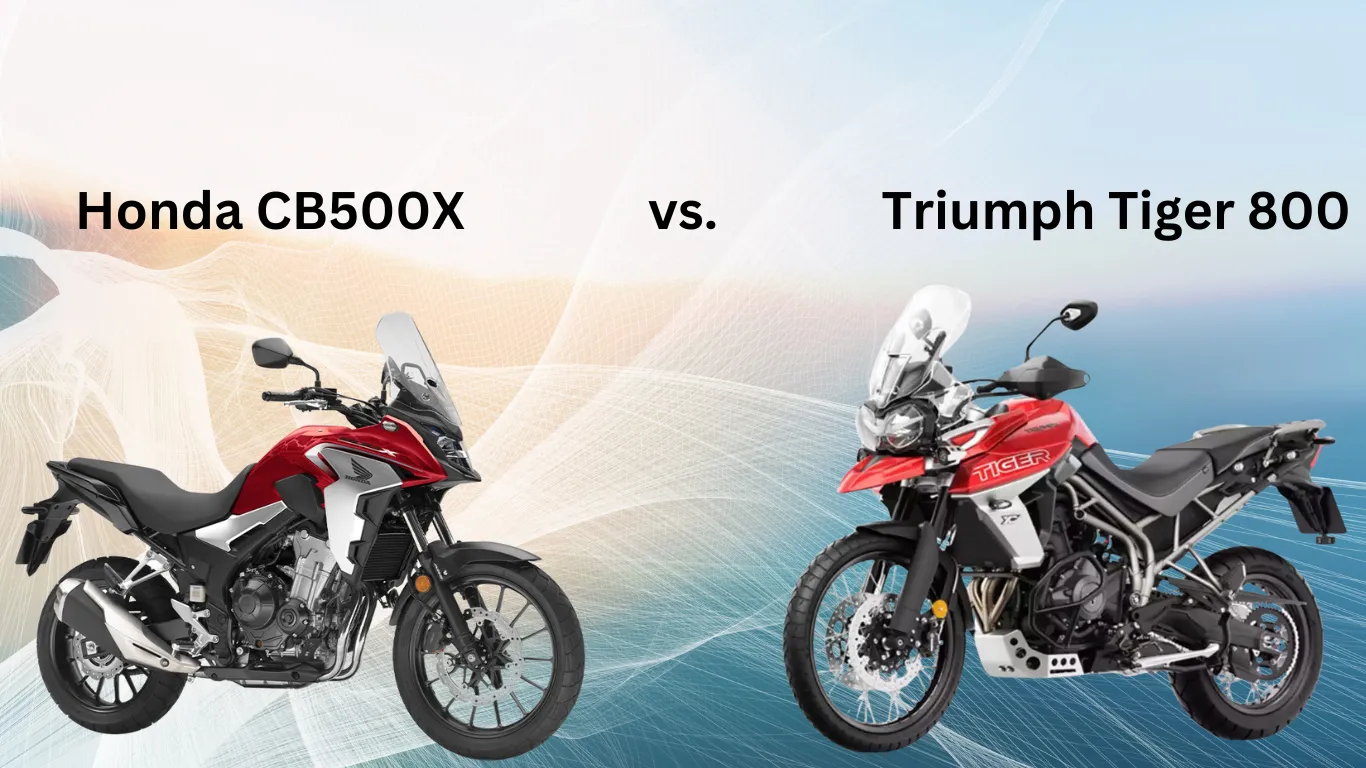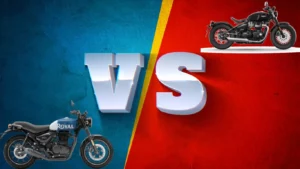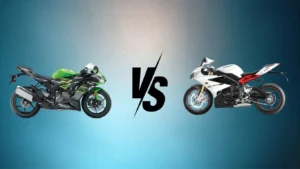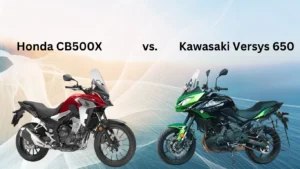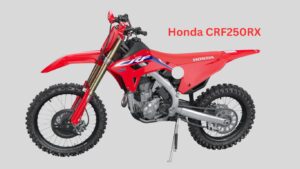If you’re an enthusiastic aficionado of adventure motorcycling, you often find yourself questioning the performance, comfort, and touring abilities of various motorcycles. We understand your quest to find the perfect ride for your adventurous spirit, hence we have compared some of the top adventure motorcycles for you.
Whether you’re keen on experiencing trails off-road, or you aim for high mileage in utter comfort, these motorcycles have a lot to offer. This article will provide you with a comprehensive comparison, covering each motorcycle’s unique characteristics, strengths, and opportunities for improvement. You’re about to discover which one of these adventure motorcycles suits your adventure needs best!
Introduction
Embarking on an exhilarating journey across tough terrains or cruising down the highway, adventure motorbikes are your multi-purpose companions. They blend the ruggedness of an off-road bike with the comfort of a touring machine. But how do they compare? Let’s delve deeper into the prowess of these go-anywhere machines to understand their off-road capabilities, the comfort they provide, and their touring abilities.
Off-Road Capabilities
When it comes to tackling challenging terrains, adventure bikes lead the pack. Thanks to their powerful engines, tall suspension, and terrain-specific tires, conquering mountains, forests, or even deserts becomes a thrilling experience rather than an intimidating challenge. To potently test this aspect, consider factors like their ground clearance, maneuverability, and handling on steep inclines or rocky roads.
Comfort
While adventure bikes aim to keep your adrenaline pumping, they don’t compromise on comfort. With spacious seating and ergonomic designs, long journeys become as enjoyable as challenging ones. But what parameters measure comfort? Look into aspects such as seat quality, riding position, wind protection, and vibration reduction mechanisms.
Touring Abilities
Adventure bikes are designed for long journeys, making them excellent touring machines. Whether it’s luggage capacity, fuel economy, or long range, these bikes excel in several areas that make them an ideal choice for traversing long distances. To fully assess their touring capabilities, dive into components like their fuel tank capacity, maintenance needs, and the availability of aftermarket accessories.
Design and Styling
When it comes to adventure motorbikes, design and styling play a crucial part in the overall appeal. Not only are the aesthetics important, but the design and styling also significantly impact the motorcycle’s performance and your comfort while riding. These factors fundamentally dictate the bike’s maneuverability, functionality, and the enjoyment you get from your travel adventures.
Design Architecture
In terms of design architecture, the weight distribution, aerodynamics, and overall ergonomics are some things to consider. A low-slung weight design aids in enhancing stability and controls for both on-road and off-road use. On the other hand, excellent aerodynamics not only improve fuel efficiency and high-speed stability but also reduce wind noise and buffeting – things that get more critical on longer rides.
Styling Elements
The styling elements can notably enhance the motorcycle’s personality and charm. Modern adventure motorcycles often feature rugged styling with knobby tires, tall suspension, and high fenders, giving them an aggressive, go-anywhere look. The accessories, like handguards, skid plates, and luggage racks, not only add to the bike’s utility but also reinforce the adventurous persona.
Comfort-enhancing designs
The designs that enhance comfort focus on seat ergonomics, suspension setup, and handlebar placement for a stress-free riding posture. A plusher seat with good support, a handlebar within easy natural reach, and a soft-enough suspension to soak up the bumps and jolts go a long way in ensuring a comfortable ride, especially over longer distances.
Functional Styling
Functional styling refers to design features that improve the bike’s performance and ease of use rather than just aesthetics. Consider elements such as windscreen adjustability for improved wind protection, a large fuel tank for extended range, and switchgear that’s easy to operate even with gloves on. These small details can significantly enhance the overall touring experience.
Engine Performance
When you’re seeking adventure, the heart of your motorbike, its engine, plays a crucial role. A machine’s engine performance directly affects its off-road capabilities and travel abilities, from climbing steep mountains to cruising long highways. Gearing up for an exciting environment? Here’s what you need to consider when examining a bike’s engine performance.
Engine Type: The Core of Performance
The engine type of adventure bikes often varies, including single-cylinder, parallel-twin, and V-twin engines. The engine type affects power delivery, vibrational smoothness, weight balance, and overall ride feel. For instance, single-cylinder engines often provide ample low-end torque ideal for off-road challenges, while parallel-twin engines deliver balanced power output for high-speed highway cruising.
Displacement: Power Meets Adventure
In layman’s terms, ‘displacement’ refers to the engine size. The greater the displacement, the more powerful the engine. Bikes with high displacement are great for long-distance touring, offering enviable top speeds, but come with a trade-off – they are typically heavier. Lighter bikes with smaller displacement engines may be preferable for off-road use where maneuverability is crucial.
Torque and Horsepower: Ascending Performance Peaks
Torque is your best friend when climbing steep ascents on your adventures; it’s the pulling power that gets you up hills. On the other hand, horsepower defines the bike’s maximum speed. Bikes with high torque values are excellent for rough, off-road terrains. Contrastingly, high horsepower is more applicable for highway cruising and long-distance rides.
Fuel Efficiency: The Journey Ahead
Fuel efficiency is not just about saving money at the gas station; it’s also about the range your bike can cover before needing a refill. Bikes with high fuel efficiency rates make excellent touring bikes, ensuring fewer fuel stops on long-distance rides. On off-road trails, efficient fuel usage can make the difference between reaching your destination and getting stuck in the middle of nowhere.
Off-Road Capabilities
When adventuring on the road less traveled, you seek the assurance that your motorbike can handle rough terrains with relative ease. This is where your bike’s off-road capabilities come into play. Whether it’s gravel, muddy trails, or rugged surfaces, the right adventure motorcycle needs to be robust enough to tackle it all and still deliver an exceptional riding experience.
Ground Clearance: The Pass-Over Ability
The ground clearance of a motorbike can make a world of difference when moving off the beaten path. Adventure motorbikes with high ground clearance afford better obstacle pass-over ability, making them less prone to underbody damage. This can turn a potentially rough ride into a smoother, more enjoyable experience.
Suspension System: The Cushion Effect
A competent suspension system is critically important for any adventure motorbike. It allows for greater travel, thereby enhancing the bike’s ability to soak up the bumps and jolts experienced on off-roads. From long-winding trails to sudden drops, the suspension response can mean the difference between a comfortable journey or a punishing endeavor.
Tire Design: The Grip Factor
The tires of your adventure motorbike are the point of contact with the surface beneath, granting you the required grip to handle off-roads. Adventure bike tires typically feature larger blocks and deeper grooves to provide both stability and superior traction on mixed terrains. Choosing the right tires can not only enhance the maneuverability of the bike but also boost your confidence as you negotiate the wilderness.
4×4 Capability: The Power Distribution
While not all motorcycles offer it, 4×4 capabilities can significantly enhance off-road performance. Having the power and torque delivered evenly and effectively to both wheels, you can navigate through tough terrains without getting stuck. A bike equipped with 4×4 features will give you the traction needed to get past the hurdles that come your way.
Suspension and Handling
Navigating through rugged terrains demands not just a tough engine but a precise balance between suspension capability and handling agility to deliver an impeccable off-road experience. This blend of efficient mechanics determines how the motorcycle responds when it hits bumps, curves, and rough surfaces. Equipped with state-of-the-art features, an adventure motorcycle ensures smoother rides on uneven trails and facilitates better control and stability on the road.
Suspension Types:
The Underlying Foundation Adventure motorcycles are designed with two types of suspension – the front suspension (or fork) and the rear suspension. The front suspension, also known as the telescopic fork, absorbs the shocks from the front wheel, while the rear suspension or the swingarm takes up the impact from the rear wheel. The balance between these two is crucial in maintaining the bike’s overall stability, especially on rocky, uneven terrains.
Shock Absorption:
The Smoother the Better A good suspension system effectively absorbs the shocks resulting from surface irregularities, ensuring smoother rides. Adventure motorcycles equipped with higher suspension travel offer better shock absorption. The dampers, comprised of a spring and a shock absorber, allow the wheel to move up and down without affecting the frame, thus cushioning the bike and the rider from the shocks and vibrations.
Handling Prowess:
Steering into Control Handling determines the bike’s steering capacity, particularly during high-speed cornering and riding on uneven surfaces. A motorcycle with superior handling enhances maneuverability and agility, enabling you to effortlessly take turns at high speeds, ride through narrow lanes, or tackle challenging off-road trails. Rider-friendly features like responsive steering, an optimized wheelbase, and lighter weight contribute to better handling in adventure motorcycles.
Comfort and Ergonomics
When you’re exploring the great outdoors on an adventure motorbike, comfort should never be compromised. The ergonomics of the bike play a significant role in offering rider comfort, improving handling and enhancing control. Adventure motorcycles are painstakingly built with various ergonomic features that cater to long journeys, challenging terrains, and arduous riding conditions, ensuring the rider’s comfort and well-being are uncompromised.
Seat Design: Tailored Comfort
The seat design of adventure motorbikes is not all about aesthetics; it’s more about comfort and performance. Ergonomically shaped and padded seats are installed to ensure minimal fatigue during long rides. Available in various options, riders can choose from low seats for better ground touch or high seats for enhanced off-road riding experience.
Handlebar Layout: Enhanced Control
The positioning and height of the handlebar significantly influences rider comfort as it affects posture and reach. On adventure bikes, handlebars are generally set higher, allowing for a more upright riding posture, minimizing strain on the back and shoulders while maximizing control and maneuverability, especially during off-road escapades.
Rider-Pillion Comfort: Sharing the Adventure
Adventure motorbikes are designed not just for solo tours but also for shared journeys. Pillion comfort is considered in the design and ergonomics too, with spacious and inviting passenger seats, sturdy and well-placed foot pegs, and optional backrest for added support during long-distance travel.
Adjustability: A Personalized Fit
Customizable ergonomics is another valuable characteristic of adventure motorcycles. With adjustable seat height, handlebar positioning, and foot peg setup, riders are given the ability to modify the bike’s ergonomics according to their individual preferences, physique and riding style. This level of customization dramatically enhances comfort and overall riding enjoyment, making each ride a unique adventure.
Technology and Features
Advancements in technology have brought a whole new dimension to adventure motorbiking. Modern bikes now come loaded with a host of features that not only improve the ride quality and safety but also enhance the overall biking experience. These tech-based advancements have become key differentiators among brands and are aimed at making your adventure riding more enjoyable, comfortable, and safe.
Navigational System: Guiding the Route
A sophisticated navigational system is a significant feature in modern adventure bikes. It lets you explore unknown terrains without worrying about losing your way. Systems equipped with GPS coordinates and real-time navigation ensure that you reach your destination without a detour. Some advanced models also feature a compass and altimeter, so you stay guided in any direction, altitude, and condition.
Safety Technologies: Ensuring Safeguarded Adventures
The safety department has seen significant tech upgrades in adventure motorbikes. ABS (Anti-lock Braking System) ensures secure braking even on slippery surfaces. Some brands offer advanced systems like Cornering ABS that ensure safety when taking sharp turns. Electronic rider aids such as Traction Control, Wheelie Control, and Engine Brake Control adjust power supply based on your riding style, giving you total control over the bike in harsh terrains.
Integrated Connectivity: Your Ride, Your Music
Integrated connectivity in adventure bikes takes your riding experience to a new dimension. With a compatible Smartphone, you can control calls, view messages, and enjoy your favorite music right from the bike’s dashboard. Some bikes also offer connectivity with Bluetooth-enabled devices which can provide real-time traffic and weather updates, adding to your riding convenience.
Rider Modes: Customized Performance
Rider modes have become a common feature in adventure motorbikes. These modes adjust the bike’s performance according to different terrains and riding conditions. Typical modes include Sport, Touring, Urban, and Enduro, each modifying the bike’s throttle response and suspension behavior catering to your riding needs. It gives you the flexibility to adapt the bike’s performance to a comfortable and enjoyable riding experience.
Fuel Efficiency
When you’re planning an epic adventure or a long-distance ride, fuel efficiency becomes more than just a number; it could be the difference between a memorable trip and an uncomfortable experience. Optimal fuel efficiency is a crucial factor in an adventure motorbike as it directly influences your journey’s range and duration. Understanding the fuel efficiency of a bike can help you budget for your adventure and plan trips efficiently.
Mileage: Every Drop Counts
The mileage of an adventure motorbike is essential as it can directly influence your travel distance before the need to refuel. High mileage bikes are conducive to long expeditions as they allow for prolonged travel over extended distances. Thus, analyzing the mileage offered by your motorbike in both city and highway conditions can be an initial criterion in determining its fuel efficiency.
Fuel Tank Capacity: The Longer Stretch
The fuel tank’s capacity can greatly impact your motorbike’s fuel efficiency. A larger fuel tank means that you’ll spend less time stopping for gas and more time enjoying your adventure on the road. You should consider your motorbike’s fuel capacity along with its mileage to determine its potential range on a full tank. This calculation can provide a realistic expectation of how far your motorbike can go between fuel stops.
Fuel Injection System: The Efficiency Mechanism
The fuel injection system plays a significant role when it comes to fuel efficiency. Adventure motorbikes equipped with advanced electronic fuel injection (EFI) offer better fuel management, thus increasing efficiency. These systems deliver the exact amount of fuel required for the engine’s operations, increasing mileage and improving overall performance. Hence, opting for an adventure motorbike equipped with EFI can contribute to better fuel efficiency.
Engine Efficiency: Harmonizing Power and Economy
While adventure motorbikes need to provide sufficient power to navigate tough terrains, they should also offer a favorable balance between performance and fuel efficiency. Modern adventure motorbikes usually feature engines that are optimized to achieve this delicate balance. An efficient engine not only ensures good fuel consumption but also contributes to lower overall running costs.
Price and Value for Money
Sure, let’s tackle this area of the article focusing on the cost and value factors, as it’s such a critical concern for explorers like yourself in the realm of adventure motorbiking. Purchasing an adventure motorbike is an investment, both in terms of initial purchase cost and the ongoing expenses tied to maintenance and potential future upgrades.
Initial Purchase Cost: The Starting Point
When you first set foot in a dealership or start browsing online, your budget will be largely determined by the retail price of the motorbike. Different brands and models will vary in this aspect, with some offering entry-level options and others jumping straight into high-end territory. Make sure you evaluate what each bike offers for its price tag—sometimes, shelling out a bit more upfront can save you money in the long run by avoiding hefty repair or upgrade costs later.
Maintenance Cost: The Long-Term Consideration
While the sticker price of the bike might be your primary concern initially, don’t forget to consider the ongoing cost of maintaining the machine. Different bikes with distinct specifications might require varying degrees of service, and maintenance costs can sometimes surprise you when they add up over time. From engine service, tire replacement, to brake pad changes, it all contributes to this long-term expenditure.
Upgrade Cost: The Prospective Investment
Your adventure motorbike might be a perfect fit for you today, but there might come a day when you’ll want to add or upgrade certain features. Whether it’s a new, more powerful engine or a better suspension system for tougher terrains, these upgrades can significantly enhance your riding experience—but at a cost. Remember to incorporate potential upgrade expenses into your long-term budget planning for your bike.
Resale Value: The Financial Return
Somewhere down the line, you might decide to sell your bike, perhaps to fund a new one or change your adventuring strategy. At such a point, the residual value of your motorbike plays a crucial role in determining its selling price. Some motorcycles hold their value better than others due to factors like brand reputation, durability, or servicing history—so it’s wise to consider these aspects when choosing your initial purchase.
Maintenance and Reliability
An adventure motorbike doesn’t hold back on journeys merely due to minor glitches. It demands consistent performance and dependability. The attributes of maintenance and reliability delve right into this need. While maintenance costs and frequency paint the picture of the effort and resources you’d need to commit to keep your motorbike in top form, reliability reflects the likelihood of encountering unexpected issues during your rides.
Service Frequency: The Pulse Check
Indeed, your adventure bike is stout-hearted, but it’s no superhero. It needs regular check-ups, just like us humans. The service frequency primarily depends on the bike’s model and usage type. Standard intervals can range from every 3,000 miles to perhaps 8,000 miles. So, when choosing an adventure motorbike, you want to ensure that it won’t keep you in the service station more than on the road.
Fault Tolerance: The Unplanned Intermission
Inevitably, there’ll be times when something in your motorbike acts up. Here’s where fault tolerance comes into play. A bike with higher fault tolerance will keep moving forward, despite minor issues, ensuring you don’t have to hit the pause button in the middle of an exhilarating ride. Though it’s hard to predict, online reviews and historical data can give you a fair estimate of what to expect.
Availability of Spare Parts: Keeping You on the Move
Really, the availability of spare parts factors heavily into both maintenance and reliability. As an adventurer, you’d like your bike to be up and running as quickly as possible after a repair. Thus, the ease of finding replacement parts at a reasonable cost will keep both – your bike’s downtime and your wallet – at bay. Choose a bike that’s not only easy to fix, but one whose parts are easily available and affordable.
Durability: The Longevity Game
Your adventure motorbike is a large investment, so you need it to last. Durability is all about how well the bike can withstand the demands of off-road excursions, harsh weather, and regular use over the years. Bikes designed with high-quality materials and exceptional craftmanship tend to offer a long lifespan, resulting in a machine that can endure the test of time and rough terrains.
While it’s easy to get caught up in the adventure and forget about the longevity, it’s an important point to consider. A durable bike requires less frequent repairs and replacements, saving you costs in the long run. Therefore, when comparing models, look for features that show a commitment to durability, such as a robust frame, rugged tires, and waterproof components. This way, your bike will keep up with your adventurous spirit for years to come.
Comparing Specifications
When it comes down to selecting the ideal adventure motorbike, a simple glance at the specifications sheet can’t offer the whole picture. Of course, certain specs are vital, but how those numbers translate into real-world performance is what truly matters. Let’s dive into a comprehensive comparison of the key specifications of our adventure motorbikes and examine how these directly impact your riding experience.
Power-to-Weight Ratio: The Performance Balancer
The power-to-weight ratio is one crucial factor that many people frequently overlook. This ratio is a measure of the motorbike’s performance. A higher ratio means a faster acceleration and smoother uphill rides. The type of materials used in the bike’s construction and the engine’s power output play significant roles in determining this key figure.
Weight Distribution: Balancing the Scale
Simply knowing the bike’s overall weight doesn’t tell the whole story. The weight distribution across the bike betters determines the handling characteristics and, ultimately, the motorbike’s performance and comfort. Bikes with a low center of gravity tend to be more agile and easier to handle, especially in challenging terrains. It’s crucial to consider this element, as handling these beasts should be as enjoyable as riding them.
Braking System: Stopping Power
The effectiveness of the braking system is another element that doesn’t always shine out on spec sheets. From disc size to the inclusion of systems like ABS (Anti-lock Braking System), these specifications define the bike’s ability to stop quickly and safely when required – a critical aspect that can’t be overlooked, particularly when off-roading.
Transmission: Making the Shift
The motorbike’s transmission plays a pivotal role in its performance. Whether it’s a manual or an automatic transmission, the smoothness of gear shifts, number of gears, and overall responsiveness can make a real difference in how the bike performs in various terrains. A flexible transmission lets you tap into the engine’s power when you need it most, providing an edge in challenging off-road conditions.
Wheelbase and Ground Clearance: Tackling Terrains
Longer wheelbases and higher ground clearance can provide superior stability and off-road prowess. However, too much of either might result in a less agile bike. There’s a fine balance that needs to be met here, and how well the manufacturers have achieved this balance often separates the good adventure motorbikes from the great ones.
Conclusion
Your ideal adventure motorcycle should possess the perfect blend of off-road prowess, comfort, and touring capabilities. Keep in mind that a good balance of engine performance, design, and innovative features can significantly enhance your riding experience. An understanding of the fuel efficiency, initial purchase and maintenance costs will help you to get the most value out of your purchase.
Reliability should not be overlooked as it ensures long-lasting fun on twisted, challenging routes. In the end, the choice boils down to your personal preference and riding style. Regardless of what you choose, an adventurous journey beckons. Now, it’s time for you to take the leap and choose your machine for the next journey.
